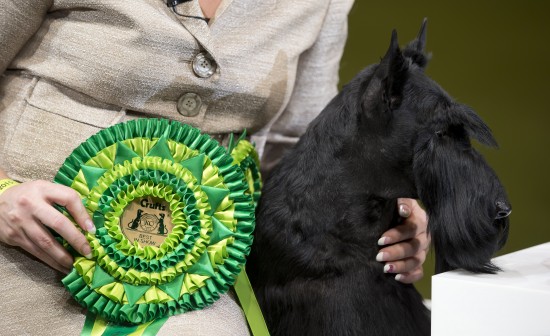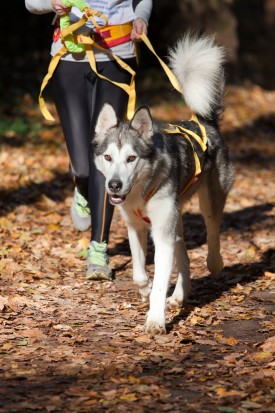
Your dog is more similar to you in their emotions than in their mentality. Some of their emotional reactions are so much like ours, that we tend to humanize them. The dogs emotions are visibly expressed in his eyes and face, his ear and tail movements, his posture, and general behavior. Sometimes they are vocally expressed as well. Your dog can feel and express the same emotions as we do: love, hate, joy, sorrow, grief, anxiety, jealousy, remorse, anger, fear, and even more subtle ones such as distrust and resignation.
Pet dogs have an endearing tendency to imitate their owner抯 emotional reactions, which may not weigh much in an argument, but it certainly offers much in moral support. They are no more individual in expressing their emotions than we are. Dogs approach and seek contact with objects and beings that inspire friendly feelings, and avoid or shy away from those they fear. Often a dog will pretend not to see a person or animal he dislikes. A crouching position and a watchful eye mean that he has not yet made up his mind to trust or distrust.
Some facial expressions are much like ours. Worried frowns, angry glares, adoring gazes, suspicious squints, questioning looks, seductive glances, humor, and even genuine smiles. A smile, accompanied by half-closed eyes and ears held low signifies intense pleasure. Dogs express their feelings thru body language more so than facial expressions. A wagging tail and friendly grin are invitations to approach and perhaps make friends, while a snarl, a fixed stare, stiff, straight legs and tail are warnings to keep your distance. The question of distance is important to the dog because of territorial concerns and of survival instincts.
Dogs usually give voice to the emotions, and their meanings are generally clear. A happy dog gurgles or squeals with pleasure. A gentle whine says 損lease? and snarling is definitely hostile. Dogs yelp from pain or fear, whine from frustration or pain, and sigh for the same reasons we do. Puppy cries are easiest to interpret, they scream when they are too hot, whimper when cold, and protest loudly when hungry. Barking is usually done to attract attention or to work excess energy if the dog is constrained such as in a kennel. Dogs exchange information among themselves less by voice than by a wide range of facial expressions, body postures and gestures.
An owner who takes the trouble to observe his dog and pay him the courtesy of listening to him, can establish a simple two-way communications system with his pet. Canine messages are usually very elementary, as he asks much less of us than we do of him. 揑抦 hungry? 揑抦 thirsty, 揑 need to go out? or 揅ome with me? are among the messages he manages to convey very well, considering his limited means. His most eloquent utterance is perhaps the emotional gurgle or barks that mean to say, 揑t抯 about time you came home, I抳e missed you!?
 How To Keep An Outdoor Cat Indoors If Needed
How To Keep An Ou
How To Keep An Outdoor Cat Indoors If Needed
How To Keep An Ou
 Handling And Managing A Herding Dog In A Domestic Environment
Handling And Mana
Handling And Managing A Herding Dog In A Domestic Environment
Handling And Mana
 Crufts 2015 - The Good Parts
Crufts 2015 - The
Crufts 2015 - The Good Parts
Crufts 2015 - The
 Getting Involved In Canicross ( Canix )
Getting Involved
Getting Involved In Canicross ( Canix )
Getting Involved
 Causes Of Atraumatic Bleeding In The Dog
Causes Of Atrauma
Causes Of Atraumatic Bleeding In The Dog
Causes Of Atrauma
Copyright © 2005-2016 Pet Information All Rights Reserved
Contact us: www162date@outlook.com